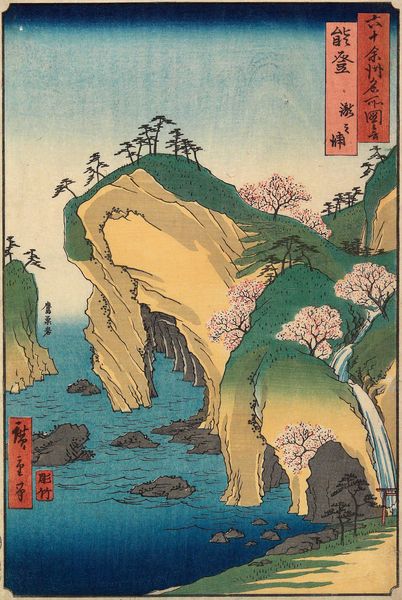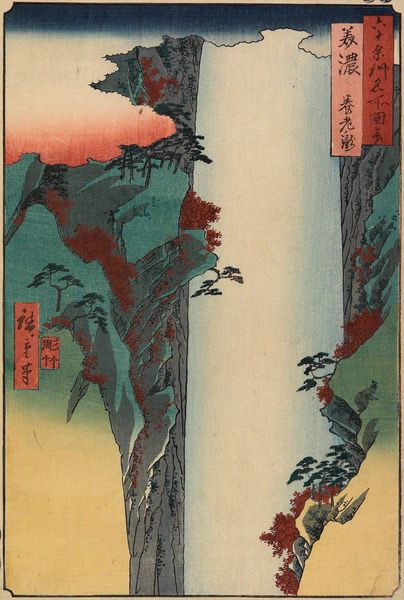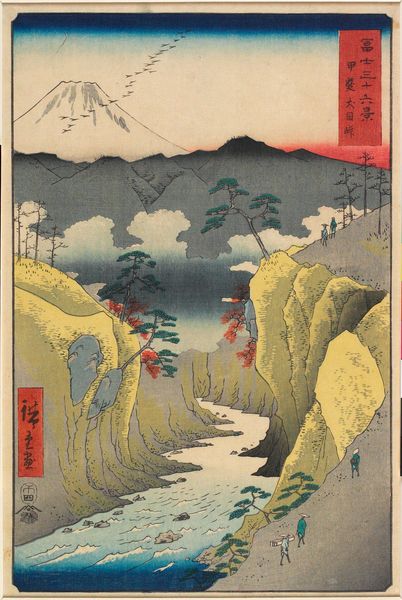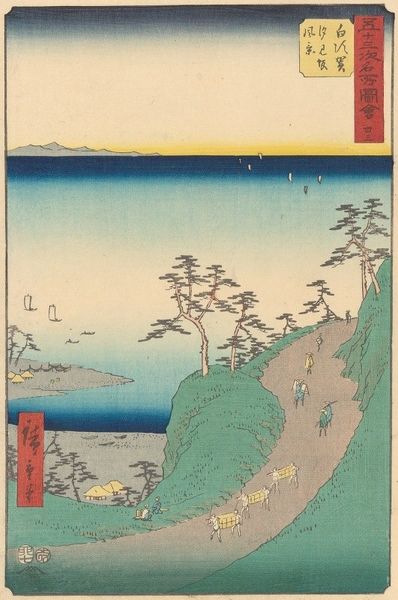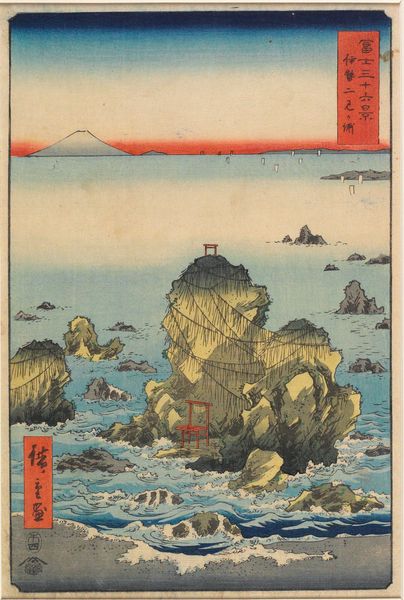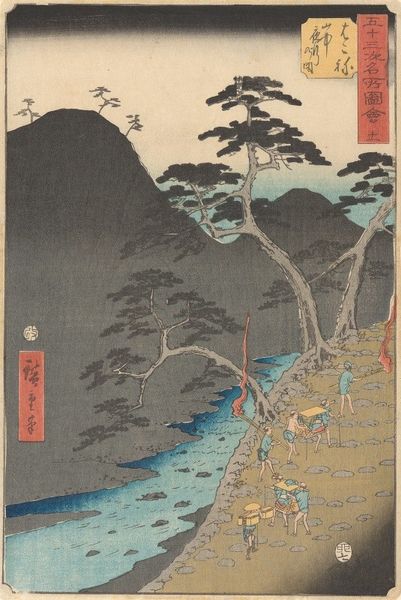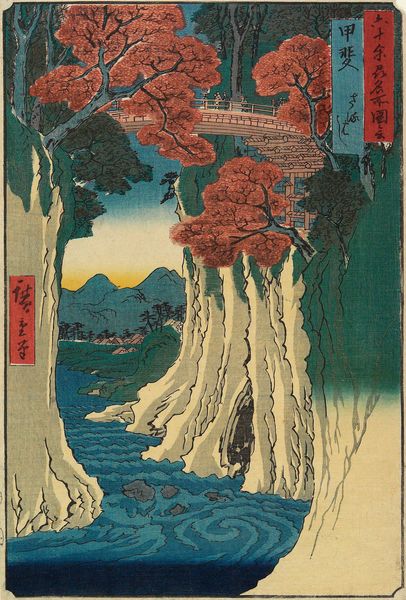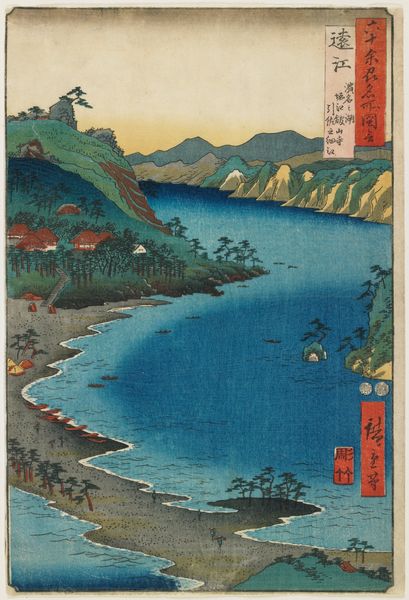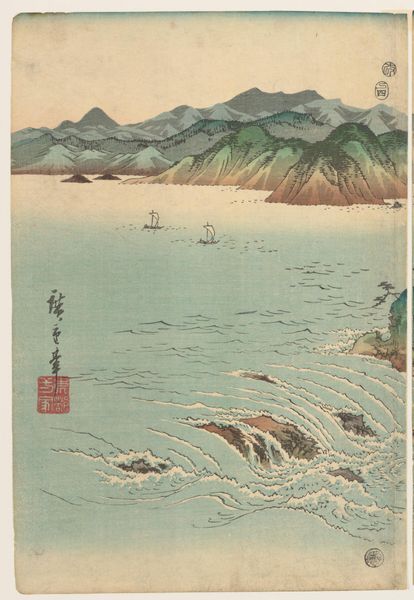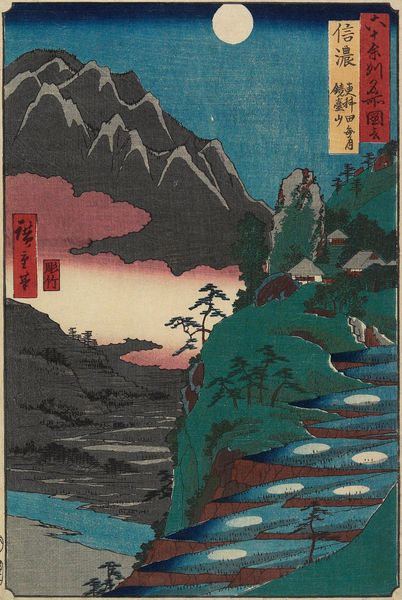
print, paper, watercolor, ink, woodcut
# print
#
asian-art
#
landscape
#
ukiyo-e
#
japan
#
paper
#
watercolor
#
ink
#
coloured pencil
#
woodcut
Dimensions: 13 3/8 × 8 15/16 in. (34 × 22.7 cm) (image, vertical ōban)
Copyright: Public Domain
Curator: We're standing before Utagawa Hiroshige's evocative woodcut print, "-Bingo--Kannon Temple at Abuto-", thought to have been created around 1853. The work now resides here at the Minneapolis Institute of Art. Editor: The composition is striking. The stark verticality of the rock formation commands immediate attention, doesn't it? There’s a real sense of scale—almost unsettling. Curator: Absolutely. Hiroshige masterfully uses the Kannon Temple, perched atop the rock, as a focal point. The temple, dedicated to the bodhisattva of compassion, is culturally significant in Japan as a place of solace and pilgrimage. The elevated position perhaps suggests transcendence, the path to enlightenment being arduous but ultimately rewarding. Editor: The structure of the cliff, especially that dark opening beneath the temple… it’s almost like a mouth, a gateway to the subconscious. And the water, those dynamic waves rendered so delicately—the whole scene pulses with this nervous energy between stability and transience. Curator: Ukiyo-e, “pictures of the floating world,” often depict ephemeral beauty, and there’s a melancholic undercurrent in Hiroshige’s works. Notice the inclusion of figures in boats, small against the immensity of nature. Editor: The artist plays with atmospheric perspective effectively here. The layering of blues in the sea and sky, combined with the almost muted greys and browns in the rock face, adds to the spatial depth, subtly suggesting the distance and making the whole piece incredibly dreamlike. Curator: He emphasizes humanity’s place within the grand scheme, both connected to nature, and somehow small and vulnerable in its face. We see this even today in our relationship with the sublime—nature reminding us of the profound unknowable of the world around us. Editor: Hiroshige invites us to contemplate those liminal spaces, to find both comfort and a touch of unease in this landscape. It makes one think of symbolic thresholds and maybe how we face life’s ambiguities. Curator: Indeed, the interplay of symbolism and aesthetic beauty allows this woodcut print to speak across centuries and cultures, resonating with a shared human experience. Editor: This piece reveals how art can render complex concepts visually and emotionally in surprisingly compact packages.
Comments
No comments
Be the first to comment and join the conversation on the ultimate creative platform.

